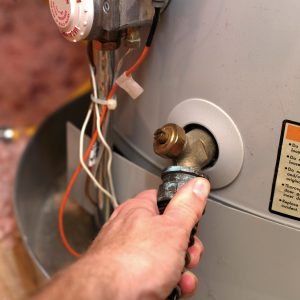It’s no secret that traditional hot water tanks and systems are big-time energy hogs. According to Environment Canada, they account for 19% of the energy used in a typical home, and 8% of the energy used in a typical commercial setting. But what will those numbers look like in five years? What will they look like in 10?
As more consumers and businesses seek out greener and more energy efficient technologies, hot water is standing out as a prime opportunity to lower a building’s carbon footprint and significantly reduce energy costs.
It’s a safe bet those energy consumption numbers will look very different in the near future, which means it’s necessary for the installers and retailers of hot water systems to take note and become leading authorities on the emerging technologies consumers are seeking.
Solar thermal hot water systems
Driven by the plummeting cost of photovoltaic modules, solar energy is slowly but surely gaining traction and working its way into the mainstream. But solar isn’t just a great source of power for lights and other electronics in the home. It can also provide up to 90% of a home’s annual water heating needs with solar thermal technology.
In a solar thermal hot water system, sunlight directly heats water through a collector panel, typically installed on the roof. Heated water flows from the roof to a hot water tank by way of a heat exchanger. Cold water then returns to the roof to absorb more heat. This is a great way to supplement a traditional hot water system or, in a perennially hot climate, even replace it entirely.
Air-to-water heat pump water heaters
Heat pump water heaters aren’t new, but they’re gaining more and more attention. When properly installed, heat pump water heaters can deliver up to 60% in energy savings over a standard electric water heater. Like an air-to-air heat pump, they draw heat from the air around them (or outside) and use it to heat water in the storage tank.
The big drawback of air-to-water heat pump water heaters is that after they extract heat, the compressor emits cold air, so a unit with an exterior compressor may be preferable in most cases. With an interior compressor, that cold air can help lower air conditioning costs in the summer, but it increases heating costs in the winter.
Geothermal systems
Like air-to-air heat pumps, geothermal systems have traditionally been viewed as a way to lower the heating costs of a home. But they can also be modified with a desuperheater to help heat hot water in the home.
In a typical geothermal heat pump system, the compressor generates a surplus of heat that isn’t needed for space heating. So, a small heat exchanger, called a desuperheater, is installed to gobble up that extra heat and channel it into the electric hot water tank.
Geothermal heat pumps with a desuperheater installed won’t fully replace the need for a hot water tank (or other hot water system) but they can help save up to 55% of a home’s hot water costs.




